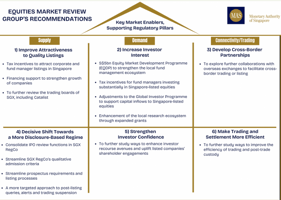From Budget Babe to Millionaire Mummy: How One Singaporean's Journey Reveals the New Rules of Wealth Building in 2025
In a world where one in six adults is a millionaire in Singapore — six times more than the global average — the question isn't whether wealth building is possible, but how to do it efficiently in an era where even high earners feel the pinch of inflation and rising costs.
Dawn, known online as "SG BudgetBabe," co-host of TFC's Wise And Shine, and the author of the Amazon bestseller "Take Back Control of Your Money," embodies this evolution perfectly. Her journey from saving S$20,000 on a S$2,000 monthly salary to becoming a millionaire investor by 2024 offers crucial insights for Singapore's high-earning professionals who, despite their substantial incomes, face unique challenges in 2025.
The Reality Check: Even High Earners Are Struggling
Recent data from Sun Life Singapore's Financial Resilience Index reveals a sobering truth: 90% of Singaporeans feel the pressure of inflation, and 42% face a significant impact on their ability to cover expenses. Even amongst high-income earners, 89% report feeling inflation's effects, with 43% noting significant impacts on their monthly expenses.
"What most people don't realise is that society and our general system is designed to suck money out of us," Dawn explains in her recent podcast appearance.
"It's the reality. It's the truth. So if you look at the cover here, you realise that there are different hands grabbing the money."
This system works against wealth accumulation through multiple vectors: progressive taxation that hits higher earners hardest, lifestyle inflation pressure, and what Dawn calls the "hedonic treadmill" — the perpetual cycle of earning more but spending proportionally more.
The Four Seasons of Financial Evolution
Dawn's approach to wealth building has evolved through what she calls "four seasons," each offering specific lessons for high-earning professionals:
Season One: Recognising the System
"Before you can take back control, you need to recognise how the system works," Dawn explains. The forces working against wealth accumulation include:
- Government taxation that increases with income
- Lifestyle inflation pressures in Singapore's expensive environment
- Financial industry fees and charges
- Social expectations around spending and lifestyle
For high earners, this recognition is crucial. Despite earning substantially more than Dawn's initial S$2,000, many professionals find themselves in the same position she was in — struggling to accumulate meaningful wealth.
Season Two: Taking Control
This phase involves the tactical elements of wealth building:
- Expense management — though Dawn emphasises this has limits
- Income optimisation through negotiation and career advancement
- Side hustle development — increasingly accepted in Singapore's work culture
The side hustle economy has exploded in Singapore, with 33% of respondents across all generations now engaged in additional employment beyond their main job. The average side hustler earned S$891 per month in 2024, up from S$810 in 2023.
"I started the blog in 2014, and I can't remember the exact dates, but sometime in 2016 was when I realised there was that limit. I couldn't cut already," Dawn recalls. "So there is a limit. So that was when I realised that my messaging started to shift."
Season Three: Strategic Investing
This is where Dawn's journey offers the most relevant insights for high earners. Her investment philosophy combines:
The Triangle Approach:
- Foundation: ETFs that capture broad market growth
- Top layer: Individual stock picks from your circle of competence
- Multi-bagger potential: Stocks that can deliver 2x, 5x, or even 10x returns
"The truth is you really only need a few multi-baggers to make your portfolio explode," Dawn explains. "That's how I got to the millionaire status. If I didn't have these multi-baggers, I wouldn't have gotten there. Honestly, it would be very, very slow."
This is particularly relevant given Singapore's current market conditions. Morgan Stanley Research expects Singapore's household net assets to nearly double to S$4 trillion by 2030, driven by equity market reform and economic growth.
Season Four: Optimising for Life
"You can be the richest person on earth, but are you gonna bring all that money to your grave?" Dawn asks. This season focuses on:
- Calculating your real financial needs
- Optimising for quality of life
- Strategic outsourcing as income grows
- Family financial planning
The Reality of Modern Wealth Building
Dawn's evolution from extreme cost-cutting to strategic spending reflects the reality many high earners face. "When I was in my early twenties, I was all about taking public transport, eating hawker food, bringing my own lunchbox to office to save because CBD food is not cheap," she recalls.
"Now, with more access, you can afford to invest more in your mental sanity. Like instead of squeezing with the crowd, you squeeze in and I was on my phone doing this. But now on the grab ride, I can sit and I can do this."
This shift isn't about abandoning financial discipline — it's about recognising that time and energy are finite resources that, when properly allocated, can generate more wealth than the money saved through extreme frugality.
The Investment Landscape in 2025
Singapore's investment environment in 2025 presents both opportunities and challenges:
Opportunities:
- The Singapore ETF market reached record highs with S$14.3 billion in AUM, up 32% year-on-year
- Government equity market reforms including S$4 billion in liquidity support
- Strong performance with STI achieving 5.3% total return in Q1 2025
Challenges:
- Inflation projections of 1.5-2.5% for 2025
- Currency considerations for international investments
- Medical cost inflation projected at 12% continuing double-digit trends
The Multi-Bagger Philosophy
Dawn's success largely came from identifying "multi-bagger" stocks — investments that return multiple times their initial value. "I had one that went up more than 10 times. It's not the only one. I had several multi-baggers in my portfolio over time, and this has actually shaped the trajectory of my investment portfolio."
For high-earning professionals, this approach makes sense because:
- Time constraints: High earners often lack time for extensive research, making concentrated positions in well-understood companies more practical
- Risk capacity: Higher incomes can support the volatility that comes with growth investing
- Circle of competence: Professionals often have industry insights that can identify emerging opportunities

The Side Hustle Evolution
The cultural shift around side hustles is particularly relevant for Singapore's professionals. What was once considered "moonlighting" is now reframed as "portfolio careers" or "slash careers."
"COVID changed a lot of that," Dawn notes. "A lot of the employment contracts back then explicitly stated that you couldn't do something else to monetise outside of work hours. COVID changed a lot of that, and I think we're very lucky to be on the cusps of that change."
This shift creates opportunities for high earners to:
- Diversify income streams beyond their primary employment
- Leverage existing skills in new contexts
- Build entrepreneurial capabilities while maintaining career stability
The Inflation Challenge
Despite higher incomes, inflation remains a significant concern. The Sun Life study reveals that only 5% of high-income respondents are planning more than 10 years ahead, compared to 8% of the general population.
"The impact of inflation is broad-based and is felt across respondents of all income levels," the study notes. This short-term focus among high earners suggests that even substantial incomes don't automatically translate to long-term financial security.
Practical Implementation for High Earners
Based on Dawn's journey and current market conditions, high-earning professionals should consider:
1. Foundation Building
- Emergency fund: 6-12 months of expenses in high-yield savings
- CPF optimisation: Maximising Special Account contributions for guaranteed 4-5% returns
- Broad market exposure: ETFs tracking Singapore, US, and Asian markets
2. Growth Layer
- Sector expertise: Invest in industries you understand professionally
- Multi-bagger hunting: Allocate 10-20% to high-growth potential stocks
- Currency hedging: Consider SGD-denominated investments to reduce forex risk
3. Income Optimisation
- Career advancement: Regular salary negotiations and skill development
- Side hustle development: Leverage professional skills in consulting or training
- Passive income streams: REITs, dividend stocks, or property investment
4. Life Optimisation
- Strategic outsourcing: Domestic help, meal delivery, professional services
- Family financial planning: Insurance, education funding, estate planning
- Lifestyle inflation control: Conscious spending on value-adding experiences
The Generational Perspective
Dawn's journey also reflects broader generational attitudes toward money and work. Her evolution from extreme frugality to strategic spending mirrors how millennials and Gen X approach wealth building differently than previous generations.
"Gen Z in Singapore are the least financially secure — 76% of Baby Boomers feel financially secure compared to just 61% of Gen Z respondents," according to the Sun Life study. This suggests that traditional approaches to financial security may need updating for younger high earners.
The Technology Factor
Singapore's push toward becoming a technology and AI hub creates specific opportunities for high earners in tech and related fields. The country is investing heavily in AI infrastructure and is likely to receive a majority of the tech sector's $100 billion in Asian investments this decade.
For professionals in these sectors, this creates both career advancement opportunities and investment prospects in companies positioned to benefit from Singapore's technological transformation.
The Global Context
Singapore's position as a wealth hub is strengthening. The city-state is expected to attract 244,800 millionaires and 30 billionaires by 2025, with high-net-worth individuals projected to reach 295,000 by end of 2025.
This concentration of wealth creates both opportunities and challenges for high earners. While it provides access to sophisticated financial services and investment opportunities, it also increases lifestyle pressures and cost of living.
The Long-Term Vision
Dawn's journey from budget-conscious graduate to millionaire investor took approximately 10 years, during which she consistently evolved her approach while maintaining core principles of:
- Systematic saving and investing
- Continuous learning and adaptation
- Strategic risk-taking
- Lifestyle optimisation
For high-earning professionals in 2025, the timeline may be shorter due to higher starting incomes, but the principles remain relevant. The key is recognising that wealth building is a dynamic process requiring regular strategy adjustments.
Conclusion: The New Rules of Wealth Building
Dawn's journey reveals that modern wealth building requires a more sophisticated approach than traditional save-and-invest strategies. The new rules include:
- Systems thinking: Understanding and navigating the forces that work against wealth accumulation
- Income optimisation: Recognising that earning capacity has higher returns than extreme cost-cutting
- Strategic investing: Combining broad market exposure with concentrated positions in areas of expertise
- Life optimisation: Using money to buy time and energy that can generate more wealth
- Adaptability: Evolving strategies as life circumstances and market conditions change
For Singapore's high-earning professionals, these lessons are particularly relevant in 2025's environment of persistent inflation, evolving work cultures, and dynamic investment markets. The goal isn't just to accumulate wealth, but to build a financial foundation that supports both current lifestyle aspirations and long-term security.
As Dawn's story demonstrates, the path to millionaire status isn't about extreme sacrifice or market timing — it's about consistent application of sound principles, strategic thinking, and the courage to evolve your approach as circumstances change. In Singapore's unique ecosystem of high costs and high opportunities, this balanced approach may be the most sustainable path to long-term financial success.
Let us know what you think about this topic, and what do you want to hear next.
Sources consulted: The Financial Coconut podcast, Morgan Stanley Research on Singapore's economic growth, Sun Life Asia Financial Resilience Index 2025, Singapore Exchange market updates, and various financial industry reports.
You can now be our community contributor and make a pitch to have your favourite personality be on our show.
Join our community group and drop us your insights on this topic.

-4.png?width=50&name=Square%20(2)-4.png)














Let us know what you think of this post